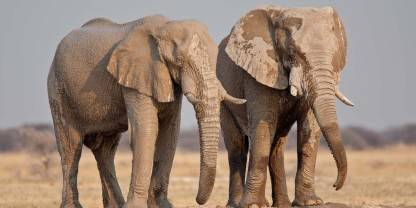Average Expert Rating
Rating Breakdown
Write a User ReviewBotswana’s Big Sky Country
Nxai Pan – forget the x unless you can master the Khoisan click language and pronounce it to rhyme with sky. An appropriate word because the flatness of the desert and its heat-hazy horizons makes for huge skies – especially in the rainy season when apocalyptic thunderclouds build up in late afternoon. Encircled by seas of fossil dunes, the pans themselves are ancient salt lakes covered in short, sweet grasses that spring up in the wake of the rains, attracting huge numbers of zebra, blue wildebeest, springbok, gemsbok, eland and red hartebeest. The herbivores in turn are followed by the big cats as shown in Roar – Lions of the Kalahari, a spectacular National Geographic movie filmed at Nxai Pan in 2003.
Apart from the game the other big attraction everybody wants to see are Baines’ Baobabs, the seven giant trees painted by Thomas Baines in 1862. In the vast expanse of the Pans they dominate the horizon for miles around, presiding over a landscape that has hardly changed since Baines himself was here.
Salt Pans & Silence
Nxai Pan makes a great contrast to Botswana’s greener, wetter protected areas to the west. Pronounced “nye”, this is a vast open grassy area with scrubby vegetation (the shimmering white salt pans are further south in Makgadikgadi). After the rains there can be good numbers of herbivores, including springbok, zebra and wildebeest, followed by lion and cheetah. However during the Dry season wildlife viewing can be sparse, although there will always be the smaller animals such as bat-eared foxes, mongooses and ground squirrels year-round.
Remarkably elephants are also found here, and the private waterhole in front of Nxai Pan’s only lodge can have a non-stop procession of ghostly white elephants in the Dry season. As well as staying at this lodge, you can camp and self-drive to Nxai Pan or join a mobile camping safari.
As this is a national park you are not allowed to drive off-road, even if you stay at the lodge, which can prove frustrating for photographers.
Baines Baobabs
The other spectacularly notable area is Kudiakam Pan with the famous Baines Baobabs, an oasis of seven huge, gnarled trees brought to life on canvas in 1862 by the explorer

